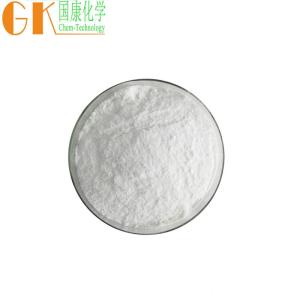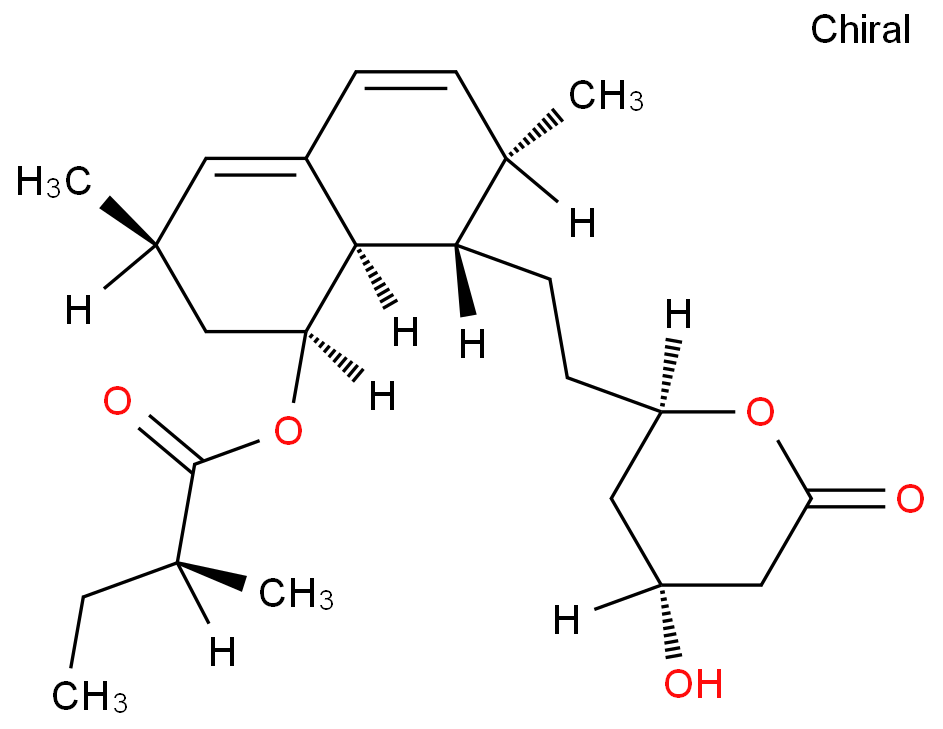Whatsapp/Telegram:+ 86 13153699522
Lovastatin is a hexahydronaphthalene ester isolated from the culture medium of Aspergillus terreus. Lovastatin is an inactive lactone. It is active only after being hydrolyzed orally. HMG-CoA reductase is a rate-limiting enzyme for de novo synthesis of cholesterol in vivo. Inhibition of this enzyme can block the conversion of HMG-CoA to methylvaleric acid, significantly reduce cholesterol synthesis, increase the expression of LDL receptor in liver, and enhance the clearance of LDL-C in plasma. Reduced cholesterol synthesis also reduces liver synthesis of ApoB100 and thus VLDL synthesis. Clinical observation showed that this product had a good effect on reducing plasma total cholesterol and LDLC in hypercholesterolemia caused by heterozygous familial hypercholesterolemia, polygenic hypercholesterolemia, diabetes mellitus or nephrotic syndrome. Statins are secondary metabolites of filamentous fungi, which can selectively inhibit the activity of hydroxymethylglutarate-Coenzyme A(HMG-CoA) reductase and block cholesterol biosynthesis, which is related to the acid structure of statins and HMG-CoA. The current class of drugs (statins) used in humans are mainly natural statins and synthetic statins. Natural statins include lovastatin, which is produced by the fermentation of Aspergillusterreus, mevastatin, pravastatin and simvastatin, and mevastatin is produced by penicilliumci trinum) is fermented and transformed by Streptococcus (streptomycescarbophilus). Simvastatin is produced from lovastatin semi-synthetically (chemically modified side chain). Synthetic statins include fluvastatin (fluvastatin), cerivastatin (cerivastatin) and atorvastatin (atorvastatin). Statin compound structure of natural statin compounds are very similar in structure, they have the same (hydroxylhexahydronaphthalene) poly ketone ketone hydroxyl hydrogen six ring part, different side chain connected to the C8 (R1) and C6 (R2). The R1 of lovastatin is methyl butyryl side chain, and the R2 is 6-alpha-methyl. Mevastatin has no 6-methyl group. Natural statin compounds all exist in the form of endogenous esters, which need to be hydrolyzed to acid form in vivo to be active. Although the structure of fully synthesized statins is different from that of natural statins, they still have a part of open-loop lactone and have the common structure of all statins that compete to inhibit HMG-CoA reductase. There are two main sources of plasma cholesterol, one is exogenous cholesterol absorbed from food, and the other is endogenous cholesterol synthesized from the body, of which endogenous cholesterol accounts for about 2/3 of total cholesterol, so it is the preferred target in lipid-lowering therapy. The synthesis pathway of cholesterol in the body starts from acetyl-CoA, HMG-CoA synthetase is produced into HMG-CoA, and then reduced into mevalonate by HMG-CoA reductase, and then phosphorylated into pharnesate of pyrophosphate, reduced into trionene, and then through lanosterol, chain sterol and other more than 20 steps to produce cholesterol. The production of mevalonate from HMGCoA by HMG-CoA reductase is a rate-limiting reaction to cholesterol synthesis, and HMG-CoA reductase is a rate-limiting enzyme, so the formation of endogenous cholesterol can be reduced as long as the activity of HMG-CoA reductase is inhibited. The partial structure of lovastatin, 3, 5-dihydroxyenanthic acid, is very similar to the structure of HMG-CoA, and its inhibitory affinity is 10,000 times stronger than that of HMG-CoA intermediates, so it can competitively bind to HMG-CoA reductase, inhibit the formation of mevalonate, and effectively reduce the synthesis of cholesterol in hepatocytes The rate at which endogenous cholesterol biosynthesis is inhibited. 1. Lipid-regulating effect Lovastatin blocks the synthesis of endogenous cholesterol by inhibiting the rate-limiting enzyme HMG-CoA reductase of cholesterol synthesis, reduces the intracellular cholesterol content, feeds the increase in the number of LDL receptors on the cell surface, accelerates the uptake and degradation of LDL particles in the blood circulation, and reduces the total cholesterol and very low density lipoprotein (LDL-1) in plasma. VLDL, LDL, and triglycerides were reduced. Since the conversion of HMG-CoA to mevalonate is an early step in the cholesterol biosynthesis pathway, the use of lovastatin does not cause the accumulation of potentially toxic cholesterol substances, and HMG-CoA can also be quickly reverse-metabolized into acetyl-CoA and participate in other biosynthesis pathways in the body. This inhibition effect is incomplete and reversible, and there is A dose-effect relationship. At therapeutic doses, the amount of cholesterol required for normal cell membrane function is not affected, so lovastatin has a significant lipid-lowering effect with fewer side effects. In general, lovastatin plays its role in the following aspects: (1) Competitively inhibiting the activity of HMG-CoA reductase and reducing endogenous cholesterol synthesis; (2) Increase the expression of LDL receptor in hepatocytes and increase the clearance of plasma LDL mediated by receptor; ③ Inhibition of smooth muscle cell migration and proliferation; ④ Reduce the assembly and secretion of liver lipoprotein. 2. Non-lipid-regulating effect Lovastatin can not only significantly reduce blood lipids, but also significantly improve the function of endothelial cells, promote the production of nitric oxide synthetase (eNOS), and thus increase the synthesis and release of NO, which plays a key role in maintaining normal pulmonary vascular tension and reversing hypoxa-induced pulmonary vascular contraction and vascular remodeling. In addition, lovastatin has anti-inflammatory and anti-proliferative effects, and can inhibit the proliferation of renal mesangial cells and the secretion of extracellular matrix, so as to reduce the purpose of glomerular sclerosis. Biosynthetic acetic acid and malonic acid are condensed, reduced, and dehydrated to form diketide intermediates catalyzed by ketol reductase (KR), enol reductase (ER), or methyltransferase (MeT), and repeated to form hexaketide, which is then produced by the enzymatic Diels-Alder reaction A dicyclonaphthalene (decalin) backbone, this dicycloxyadmixture extends into nonaketide, which is released from polyketo synthetase (PKS) to form 4a, 5-dihydromonachlorin L,4a, 5-dihydromonachlorin L, which can be converted to 3α-hydroxy-3, 5-dihydromonachlorin L in the presence of molecular oxygen, which can be spontaneous In the presence of molecular oxygen, monachlorin L was hydroxylated into monachlorin J by C-8. Inhibition tests with methylpyrone, carbon monoxide and sulfhydryl reagents proved that the enzyme involved in this reaction was monooxygenase. Monacholine J is esterified to lovastatin by (2R) -methylbutyrate.

Weifang Xingbei International Trade Co., Ltd is a pharmaceutical and chemical new material research and development enterprise to meet the needs of the global pharmaceutical market. Continue to innovate the world's leading new chemical and pharmaceutical products. Set innovative drug research and development, industrialization, market operation in one. 公司拥有雄厚的技术力量、先进的设备、严格的质量管理体系和优良的售后服务。 多年来,我们的产品广泛销往多个国家和地区,与世界各地的贸易商和最终用户建立了稳定的合作关系。 并依托强大的物流体系,在美国、墨西哥、加拿大、澳大利亚等地建立了自己的海外仓库。 本地热销产品可从海外仓发货。 深受当地客户好评。 我们期待成为您的合作伙伴,我们将认真处理每一个订单。
 |
 |
 |
 |